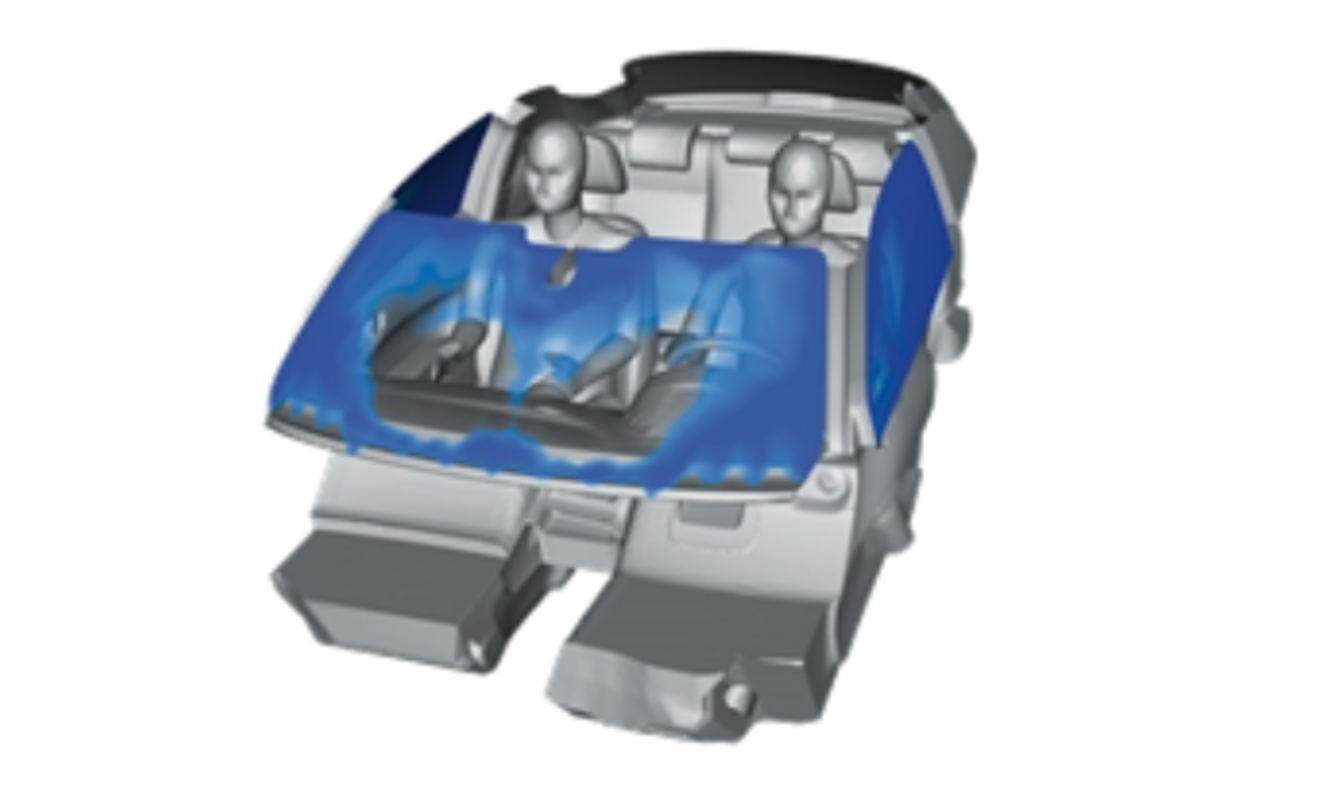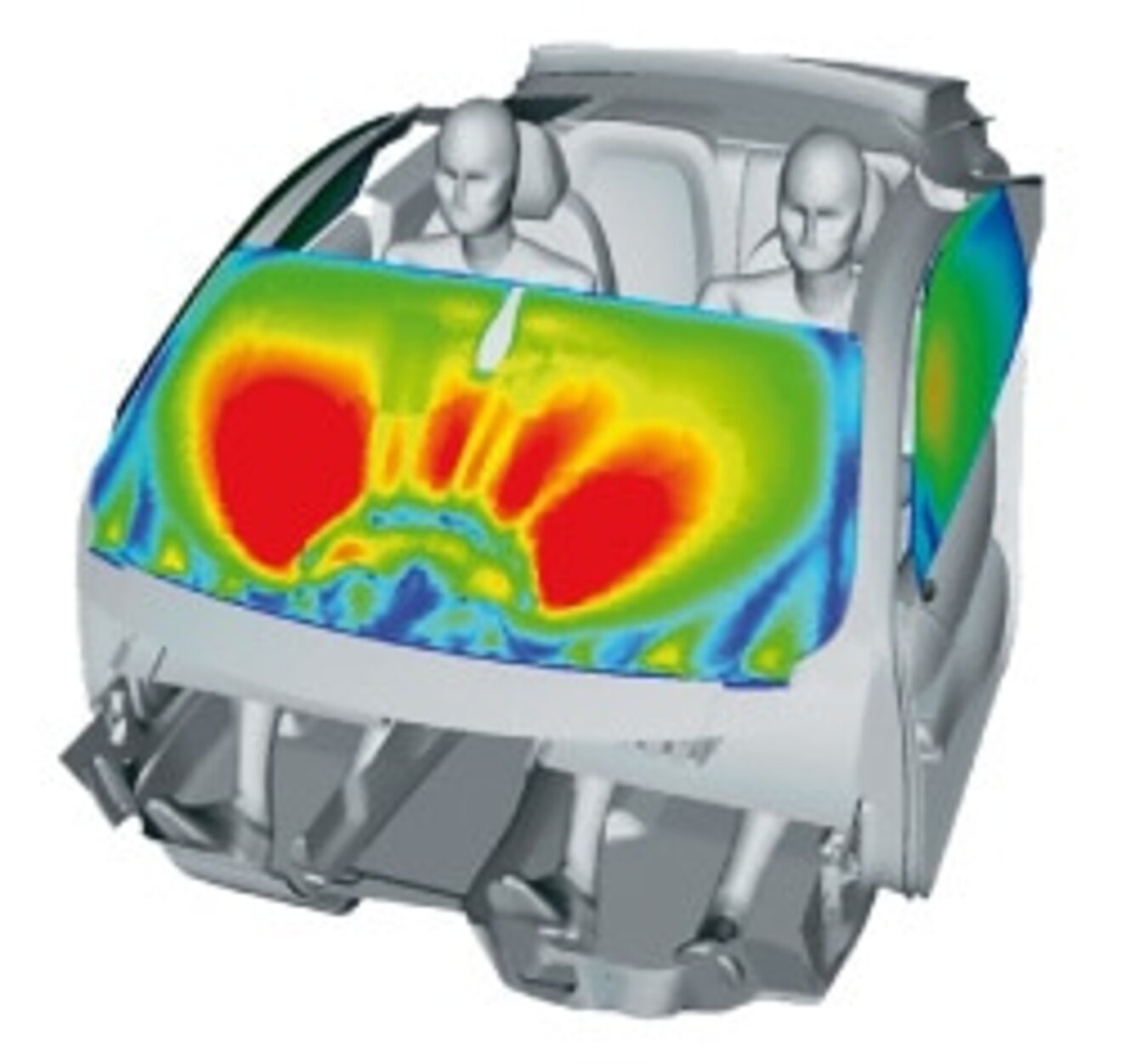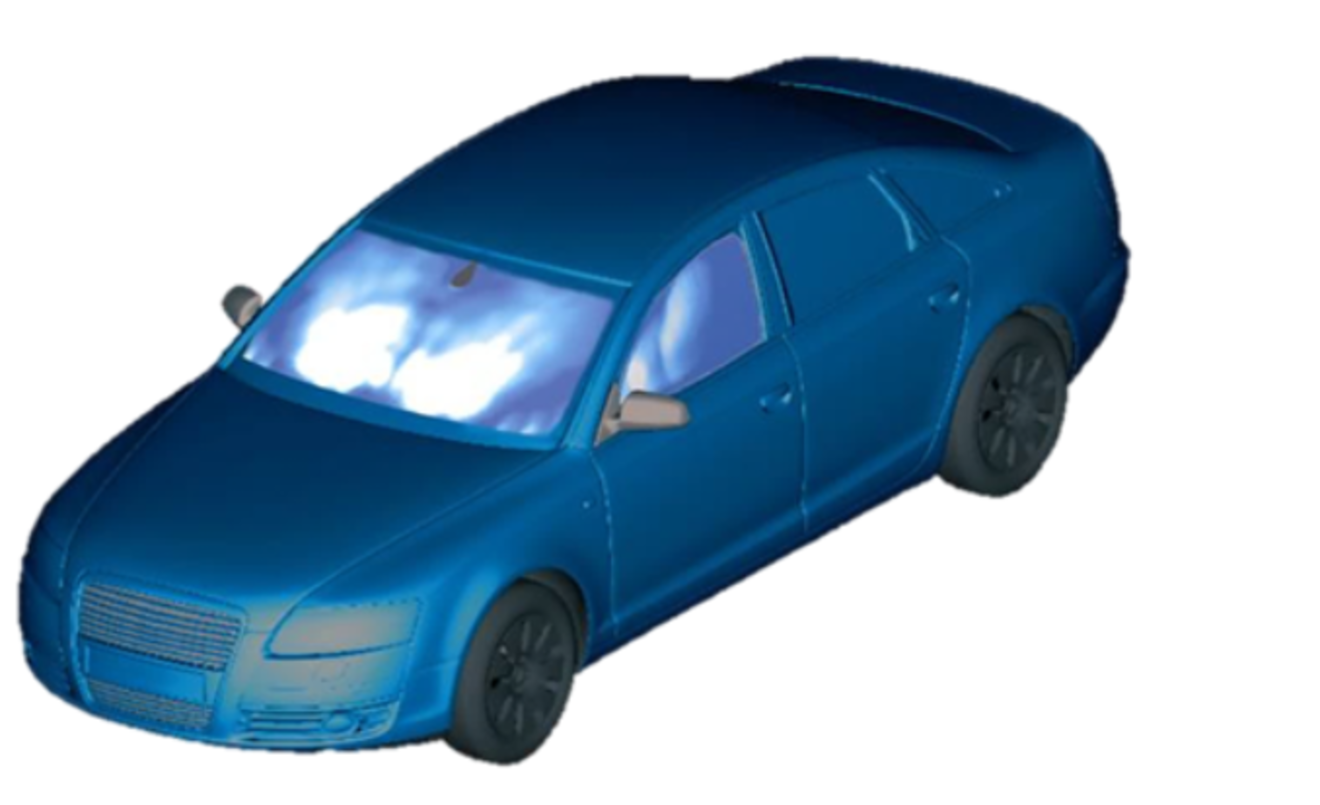Defrosting the windows of a passenger car


Task / Calculation
Who doesn't know it? You want to take the car, but the windscreen, the wind is covered with a layer of of of of to, and you to, you want to do. Now you have to scratch it, switch on the engine and set the blower to full blast.
Vehicle manufacturers have corresponding specifications here for the time in which a windshield in the air-conditioning duct must give a clear view again under specified boundary conditions.
But what if these times are too long, or if the window does not clear the viewing area quickly enough?
With the help of simulation, this can be predicted even before the prototype is tested. The side windows are also taken into account.
The CFD models assume a constant ice layer thickness. schmidt that the thawing process can be simulated via the airflow from the deicing nozzles.
Comparisons with simulation results from previous models that have already been tested provide a very good basis for evaluating the deicing behavior before tests are run in the air-conditioning duct.
For electric vehicles, this topic becomes even more important, since the amount of energy required for defrosting is approximately the same as that required for driving at 100 km/h.
Method development
Merkle & Partner developed and applied corresponding methods for Audi at an early stage in the 2000s.
Especially for electric vehicles, we have carried out detailed investigations as part of our research project EMOHEIZ in cooperation with the FKFS Stuttgart and AUDI AG.
Project examples
Results of example projects and studies on two vehicle projects are presented below.
Courtesy of AUDI AG, Ingolstadt
Keywords
- CFD simulation
- De-icing
- Indoor air conditioning
- Air conditioning duct
- Air distribution
- Manifold
- Method development
- Windshield


